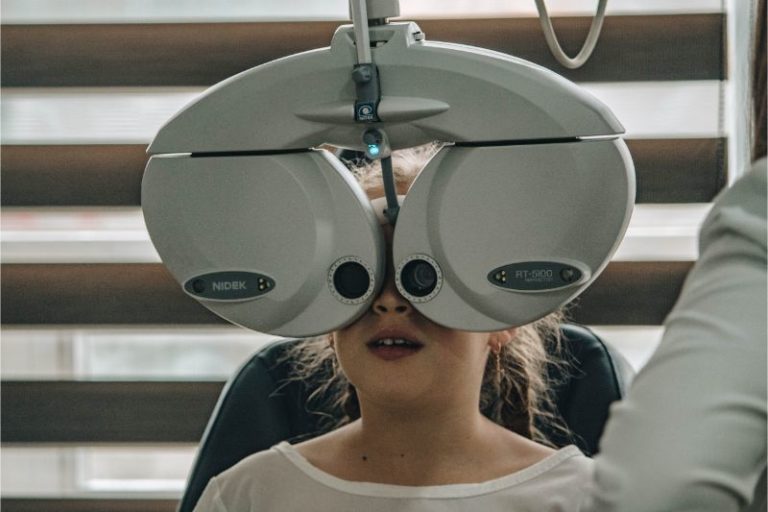VA Disability Ratings for Cataracts

What are Cataracts?
Cataracts occur when the lens of the eye becomes cloudy over time, resulting in changes to your vision. Symptoms of this condition typically include the following:
- Clouded, blurred, or dim vision
- Increasing difficulty with vision at night
- Sensitivity to light and glare
- Need for brighter light for reading and other activities
- Seeing “halos” around lights
- Frequent changes in eyeglass or contact lens prescription
- Fading or yellowing of colors
- Double vision in a single eye
Cataracts are one of the leading causes of blindness worldwide and can become very debilitating if left untreated. There are several types of cataracts including: age-related cataracts caused by degenerative changes, congenital cataracts, traumatic cataracts that form after injury to the eye, and secondary cataracts that develop as a result of other medical conditions.
VA Research on Cataracts
In recent years, VA researchers published two studies demonstrating that the rate of eye disease may be increasing in the VA system, and that veterans with serious mental illness have a higher rate of eye disease than other veterans. Specifically, the first study, published in the November-December 2016 issue of General Hospital Psychiatry, showed that VA patients with serious mental illness have an even higher rate of dry eye, cataracts, and glaucoma than the general veteran population. The second study, published in the January 2017 edition of the American Journal of Ophthalmology, found that the rate of eye disease, especially of glaucoma and cataracts, increased in the VA Capitol Health Care Network (i.e. provides health care services to veterans in Maryland, D.C., portions of Virginia, West Virginia, and Pennsylvania) from 2007 to 2011. These findings have led VA to pay closer attention to both the incidence and causes of cataracts within the veteran population. However, veterans must still meet certain criteria to be eligible for service-connected disability compensation for this condition.
Generally speaking, veterans must show evidence of a current diagnosis, an in-service event, and a medical nexus between the current disability and the in-service event. It is also possible for veterans to receive service connection for cataracts on a secondary basis.
Diabetes Mellitus Type II and Cataracts
Due to the chronic nature of diabetes mellitus type II, complications can develop that may warrant separate disability ratings for secondary conditions. Importantly, secondary conditions must be at least as likely as not caused or aggravated by the already service-connected diabetes in order for a veteran to be compensated for them. Research has consistently determined that diabetes is closely connected to the presence of cataracts. Specifically, the American Diabetes Association found that diabetes increases the risk of eye disease insofar as people with diabetes are 60 percent more likely to develop cataracts. Furthermore, the onset of cataracts in individuals with diabetes occurs at an earlier age and then progresses faster.
VA’s Adjudication Manual: Diabetes and Cataracts
It is important to note that at one point, even VA conceded that cataracts are directly related to diabetes. Prior to December 2005, VA’s Adjudication Manual (i.e. M21-1 Manual) required VA to consider cataracts as a result of diabetes mellitus type II, unless shown to be of other origin. This means that VA was instructed to grant secondary service connection for cataracts if a veteran was already service-connected for diabetes, and the veteran’s cataracts were not explicitly due to some other established cause.
However, this provision was rescinded in the publication of the revised manual. In the updated version, it simply states that complications of diabetes “may” include cataracts. The new language indicates that VA does not have to automatically grant service connection as described above. Rather, it reinstates the nexus element of service connection in which veterans must prove that their cataracts are due to their service-connected diabetes. Nevertheless, it may be helpful for veterans to be aware of VA’s previous stance on the matter when filing a service connection claim for cataracts as secondary to diabetes.
How Does VA Rate Cataracts?
Cataracts are evaluated under 38 CFR § 4.79, Schedule of Ratings – Eye, Diagnostic Code (DC) 6027. If surgery has not been performed, cataracts are rated under the General Rating Formula for Diseases of the Eye on the basis of either visual impairment due to the particular condition or incapacitating episodes, whichever results in a higher evaluation. Here, incapacitating episodes involve a period of severe symptoms that requires a visit to a physician for treatment, such as laser treatments, surgeries, injections into the eye area, etc. The General Rating Formula for Diseases of the Eye is as follows:
- “60% – with documented incapacitating episodes requiring 7 or more treatment visits for an eye condition during the past 12 months
- 40% – with documented incapacitating episodes requiring at least 5 but no more than 7 treatment visits for an eye condition during the past 12 months
- 20% – with documented incapacitating episodes requiring at least 3 but less than 5 treatment visits for an eye condition during the past 12 months
- 10% – with documented incapacitating episodes requiring at least 1 but less than 3 treatment visits for an eye condition during the past 12 months.”
If surgery has been performed, cataracts are still rated based on the same General Rating Formula listed above, but may vary depending on the outcome of the surgery. Specifically, if a replacement lens is present (i.e. pseudophakia), cataracts are evaluated under the General Rating Formula as usual. However, if there is no replacement lens present, the condition is evaluated based on aphakia under DC 6029.
About the Author
Share this Post
